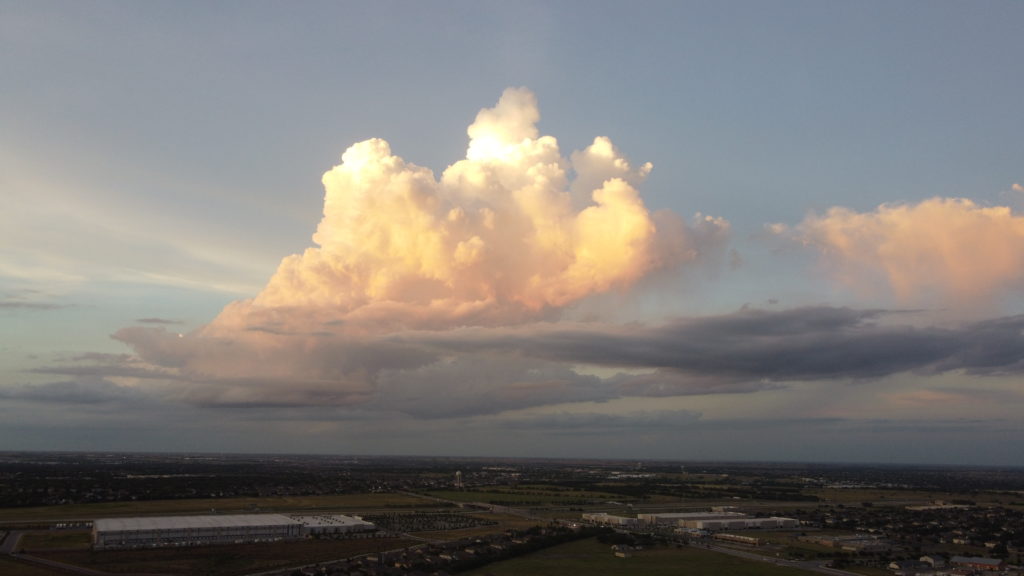
I was trying to get over my fear of high-winds while flying my drone — see the story about almost losing it. I’ll tell you what I learned about flying in high winds, but first, I noticed some beautiful clouds forming. I’ve taken pictures of storm clouds before, but always from the ground. I like this perspective much better. It’s nice to see the ground. Sometimes, I’ve been able to see the cloud and it’s shadow, very cool.

I’ve been doing a bit of experimenting, and here’s what I’ve learned about flying the Mavic Mini in high winds:
- It does quite well at holding its position in moderate wind. I suspect that there are places where that’s not good enough — like a beach. If that’s important to you then buy a more expensive drone.
- You might see dozens of “High Wind” warning messages without it being an issue.
- Watch the “speed” readout. As long as it’s wobbling no more than 0.3 mph you’re probably fine, but winds change ..uh.. like the wind. You can suddenly be drifting away at several mph. Best not to panic.
- If it absolutely cannot hold its position,
it will not return to where it was, even when the wind calms down. Update: At least for about 100 feet it will try to return to where it was, but it requires great self-discipline to not interfere with that. I’m pretty sure as soon as you move the controls it’s going to forget where it was trying to be. So it’s up to you to “head home” when the wind is calm as fast as you can. - Of course, dropping altitude is probably the best plan to regain control but, in my first incident, that didn’t help. I went down to ~30 ft and was still losing ground.
- Winds tend to be gusty. Try to regain ground between gusts. Unfortunately, you can only know when that is if you let go of the stick and watch the speed readout.
- By listening to the motor noise, I think it is more efficient about fighting winds when facing away from the wind, not heading into the wind. It kind of makes sense to me if you think about the positioning of the propellers and how they might interfere with each other when pitched downwards.
- You will have a better chance of fighting a stiff wind if you are dropping altitude at the same time, since the motors aren’t working as hard. You should also be in “Sport” mode while trying to fight the wind. I don’t think it matters for station keeping, but I think it does when you’re trying to regain lost ground between wind gusts.
- It’s easiest to see that you’re losing ground if you point the camera straight down, but you better be familiar with where you are and where you need to be if you’re going to be fighting the wind.
- Interestingly, you can see symptoms that the drone is working hard to hold its position. For instance, if it’s facing away from the wind and you have the camera pointed straight down, the camera will suddenly raise several degrees. That’s because the gimbal doesn’t go any further than straight down and the drone has tilted to fight the wind.
- Update: Even though the drone warns “Unable to use Return To Home”, it’s not true. If you’re panicky or disoriented, mash that “RTH” button and let it fight the wind for you. I noticed that you can still control the rotation of the drone and the gimbal position while it is returning. As mentioned earlier I think that pointing the drone away from home will improve it’s ability to fight the wind. BTW, don’t be concerned with the accuracy of the “home point”, all you want to do is get it close enough to you that you can cancel the RTH and land it yourself.